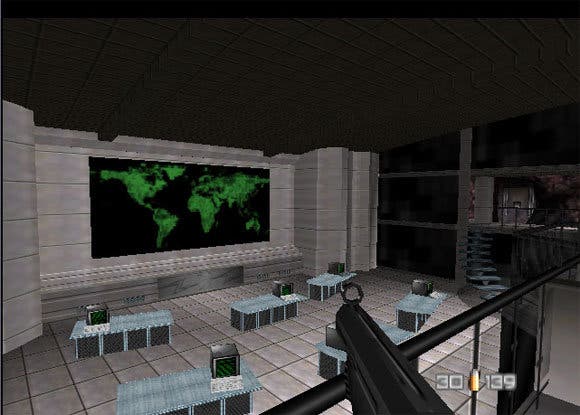Saturday Soapbox: The Trouble With Tie-ins
Why do licensed games have such a bad reputation?
So you get into game design, or programming, or art, and you work on a licensed product. Maybe it's Marvel or DC or a film tie-in. Maybe as was the case with a very talented friend of mine, it's an "immersive hub" for a breakfast cereal. That's kind of hard to get excited about, I reckon, and I really like breakfast cereal.
Another acquaintance once told me about his days working as a producer on a fairly big licensed game for a major publisher. You may well have played this game. His main duties, he said, included making sure all the subtitles were typed correctly, and, oh yes, waiting around the back of the studio to catch programmers who would sneak out of the rear windows and try to run away. The end result wasn't entirely magnificent. The phrase "tour de force" featured in very few reviews.
One of the most interesting problems with licensed games, though, comes down to a simple matter of freedom. You can be working on a great licence, but not a great use of that licence. In other words, working on a Batman game might be your dream gig, but would you be as happy to work on a Joel Schumacher Batman game?
The answer, I suspect, is no, and there are plenty of examples of this effect to be found on the shelves. Look at the difference between Melbourne House's Transformers game, and most other Transformers games, built to hit alongside movies or toy releases. Look at Transformers: War for Cybertron and the same studio's follow-up, which was based on Transformers 3. Compare Tron 2.0 and Tron: Evolution.
There are, of course, exceptions. One of the greatest licensed games ever made is GoldenEye, which managed to be significantly better than the film that inspired it. But there aren't many GoldenEyes knocking around, just like there aren't many Martin Hollises, and most licensed fare is hemmed in by someone else's visual designs and plot twists, and then rushed out to meet someone else's launch date.

When you give people a little more freedom, though, you get Arkham Asylum and Arkham City. You get The Thing, or Riddick, or Epic Mickey. Epic Mickey might not be everybody's idea of a good time, certainly, but it's hard to say that it's your typical Disney tie-in. It's dramatic, inventive, and endlessly polarising. It's that rare game that had - forgive me - a vision shaping it.
Here's the thing, though: I think licensed games may finally be changing. I think they might be steadily getting better. Sure, plenty of them are still dismal and disappointing, but a series of studios have emerged over the last few years that can work within all these restrictions and limitations, and work pretty well. Beenox is one of them, Edge of Time aside, as is WayForward, the ingenious Californian gun for hire that has brought thought and cut-price creativity to everything from Thor to BloodRayne. Ubisoft, likewise, didn't have a huge budget for Scott Pilgrim, but made something pixelated and cute and appropriate to the licence, rather than something lavish and empty - and the publisher's just done the same thing, in my opinion, with its clever spin on Tintin.
What these studios and these games have in common, then, isn't just the limited budgets and the curtailed production schedules - it's that they've responded to those problems with creativity and invention. They've responded with the kind of things, in other words, that you can find in all great games.
